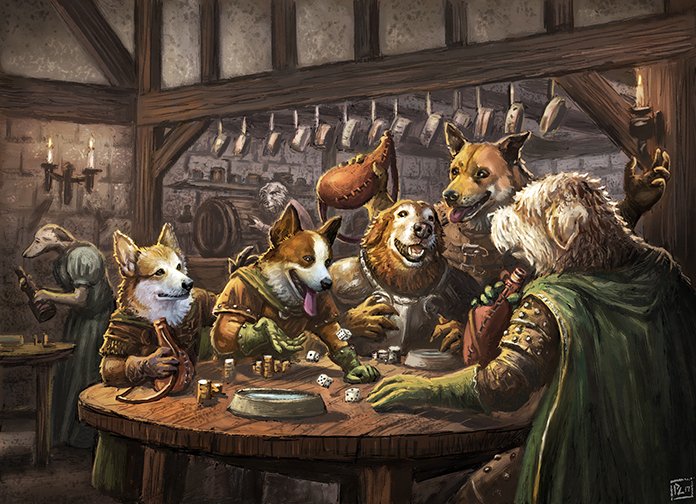
Over at DriveThruRPG.com it’s “Teach Your Kids to Game” week. Every year a number of Pugmire and Monarchies of Mau products go on sale over there, and this year is no different. But it got me thinking about my experiences running Pugmire for kids or playing in games with kids.
To be clear, by “kids” I’m talking about early teens. I think the youngest player I’ve gamed with was 9, but most were around the 12-16 range. I haven’t played with younger kids, partially because Pugmire requires a certain level of reading and math skills that some younger kids might struggle with.
That piece aside, I’ve had a number of people ask me for tips or tricks on how to run games for kids. And at first, the question seemed odd to me, because at a high level I don’t treat kids all that much differently than I do adult players (or at least, adult players who are new to tabletop roleplaying games). There are plenty of adults who struggle with math, or who didn’t read the rulebook, or any number of concerns that people level at kids playing in tabletop RPGs. But on reflection, there are some things I’ve kept in mind in such games.
In general, I try not to talk down to kids, but I am prepared to explain things. The advice isn’t as contradictory as it might sound, though. Like any new player, kids will have questions about how things work, and with fewer preconceptions of what is or isn’t possible. However, kids also can sense insincerity or being talked down to easily, so trying to “dumb things down” hasn’t worked for me. You might need to fudge some numbers, help with the math, or explain basic concepts, but you don’t have to make your story any less nuanced or dramatic.
That said, be prepared for some unusual mental blocks or concerns. In one game, a younger player talked to several NPCs before asking the Guide how many stories they were “allowed” to follow. It took a little bit of conversation to untangle what was meant, but it turned out the player had a lot of experience with computer RPGs, and assumed that each story contributed to a kind of mental “quest log” that could, theoretically, have a limit on how many they could take. While the question baffled us initially, I admit the logic is really sound, given that perspective.
Another one, which isn’t restricted to kids, is a lack of shape familiarity with dice. In particular, to an inexperienced eye, a d8 and a d10 look really similar, and it’s not uncommon for them to be confused, leading to the occasional surprising roll. (I even confuse them myself, even now!) But larger than that, just saying “roll a d4” isn’t intuitive. You have to point out which one is the d4, maybe why it’s called that, and then educate them on how to read it. Particularly young kids might not even know how to shake a die in their hand. That’s all part of the “be prepared to explain things” part of the advice.
One more piece of advice, particularly with tables that have a mix of adults and kids: Make sure you balance the attention they get. Many kids will be boisterous, unintentionally trampling over everyone else’s attempts to do things, or they’ll be shy and unwilling to inject themselves into the story unless they’re called on. While kids are people and have a variety of lived experiences, on average I’ve found that kids don’t intend to dominate the table or sit quietly. For the former, they’re probably just excited and want to contribute, and on the latter they might simply enjoy listening to everyone and forget they’re supposed to (or can) contribute! However, it is true that kids will likely have shorter attention spans, so shooting for games that last a couple of hours over the more traditional 3-5 hour session might be a good idea. Otherwise, just treat them like you would any other player, giving them a proportionate amount of time to be cool and entertaining at the table.
Have you had a good experience running Pugmire for your kids (or anyone’s kids)?
Teach Your Kids to Game with Pugmire and Monarchies of Mau!
Or preorder Realms of Pugmire 2nd Edition on BackerKit!
